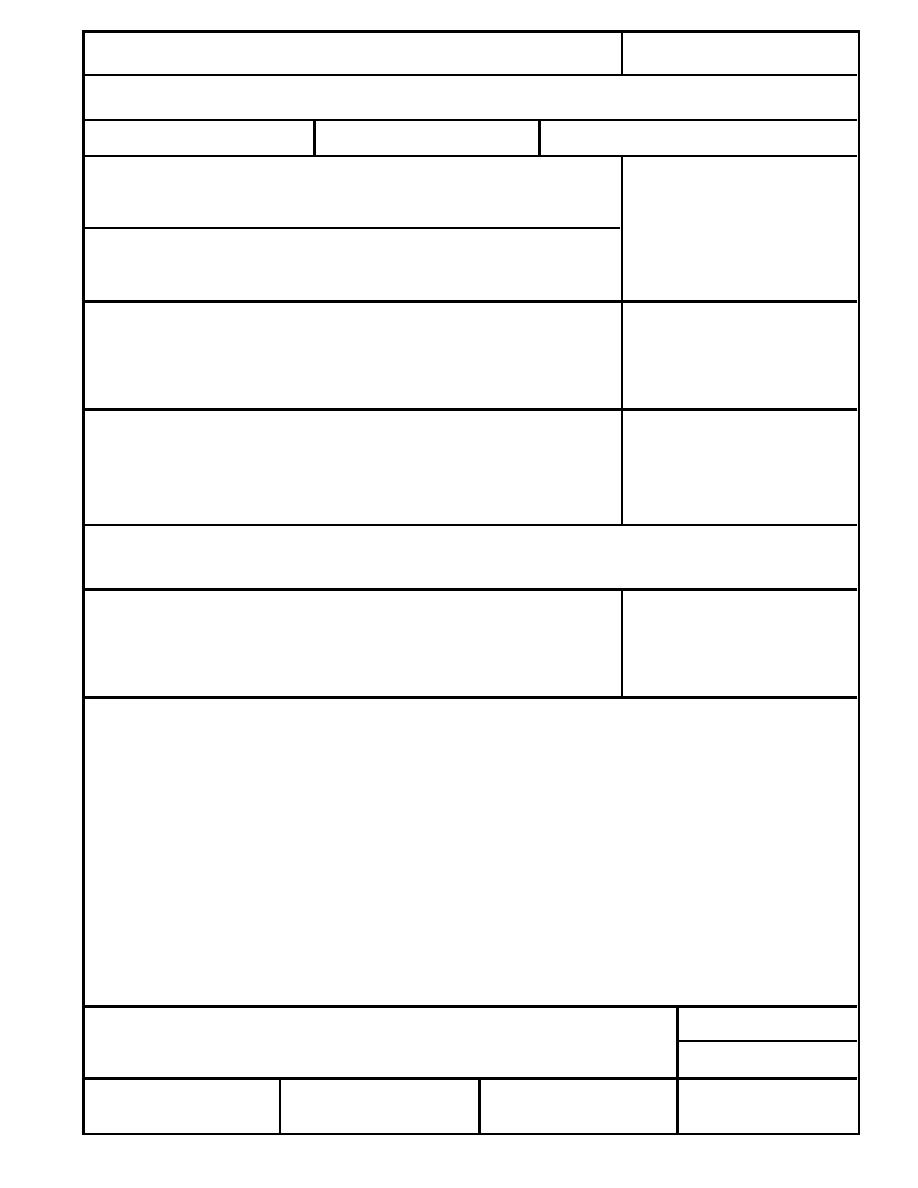
Form Approved
REPORT DOCUMENTATION PAGE
OMB No. 0704-0188
Public reporting burden for this collection of information is estimated to average 1 hour per response, including the time for reviewing instructions, searching existing data sources, gathering and
maintaining the data needed, and completing and reviewing the collection of information. Send comments regarding this burden estimate or any other aspect of this collection of information,
including suggestion for reducing this burden, to Washington Headquarters Services, Directorate for Information Operations and Reports, 1215 Jefferson Davis Highway, Suite 1204, Arlington,
VA 22202-4302, and to the Office of Management and Budget, Paperwork Reduction Project (0704-0188), Washington, DC 20503.
1. AGENCY USE ONLY (Leave blank)
2. REPORT DATE
3. REPORT TYPE AND DATES COVERED
October 1996
4. TITLE AND SUBTITLE
5. FUNDING NUMBERS
The State of the Art of Modeling Millimeter-Wave Remote Sensing
of the Environment
6. AUTHORS
Kevin O'Neill
7. PERFORMING ORGANIZATION NAME(S) AND ADDRESS(ES)
8. PERFORMING ORGANIZATION
REPORT NUMBER
U.S. Army Cold Regions Research and Engineering Laboratory
72 Lyme Road
Special Report 96-25
Hanover, New Hampshire 03755-1290
9. SPONSORING/MONITORING AGENCY NAME(S) AND ADDRESS(ES)
10. SPONSORING/MONITORING
AGENCY REPORT NUMBER
Office of the Chief of Engineers
Washington, D.C. 20314-1000
11. SUPPLEMENTARY NOTES
For conversion of SI units to non-SI units of measurement consult ASTM Standard E380-93, Standard Practice for Use of the
International System of Units, published by the American Society for Testing and Materials, 1916 Race St., Philadelphia, Pa.
19103.
12a. DISTRIBUTION/AVAILABILITY STATEMENT
12b. DISTRIBUTION CODE
Approved for public release; distribution is unlimited.
Available from NTIS, Springfield, Virginia 22161
13. ABSTRACT (Maximum 200 words)
A survey was undertaken of models for millimeter-wave (MMW) scattering and emission from environmental
features, particularly in the vicinities of 35 and 94 GHz. The ultimate objective was to identify models suitable
for current or near-future application in scene generation. The ideal model would be based on first principles,
would be readily available in facilitated software, and would have reasonable requirements in terms of compu-
tational resources and input parameters. At MMW frequencies, these requirements push the frontiers of current
science and technology. In most applications, one must accept as a first approximation the approaches currently
under development in research settings. This report reviews the basic methods and approaches underlying all
available models in terms of volume scattering, treatment of surfaces and transitions, and the development of
statistical quantities from rational physics. Very rough surfaces, locally steep surface slopes, and low-angle
incidence can rarely be treated entirely successfully, but recent developments offer the prospect of significant
progress. Volume and combined surfacevolume scattering and emission models are reviewed for application
to land, water, vegetation, snow, and ice environments. Most are essentially works in progress, with theory and
validation currently building from earlier work at C and X bands. Very sound capabilities are available for
treatment of common atmospheric features, with recent progress in modeling more complex meteorological
events. Limiting consideration to truly available codes, a list is provided for each of the above areas of models
and their sources. Because it is the most comprehensive and is currently facilitated in terms of software, the MIT
EMSARS model is the foremost condidate to serve as a platform for future addition and development.
14. SUBJECT TERMS
15. NUMBER OF PAGES
Algorithms
Modeling
Surface scattering
33
Emission
Remote sensing
Volume scattering
16. PRICE CODE
Millimeter-wave (MMW)
Software
17. SECURITY CLASSIFICATION
18. SECURITY CLASSIFICATION
19. SECURITY CLASSIFICATION
20. LIMITATION OF ABSTRACT
OF REPORT
OF THIS PAGE
OF ABSTRACT
UNCLASSIFIED
UNCLASSIFIED
UNCLASSIFIED
UL
Standard Form 298 (Rev. 2-89)
NSN 7540-01-280-5500
Prescribed by ANSI Std. Z39-18
298-102



 Previous Page
Previous Page
